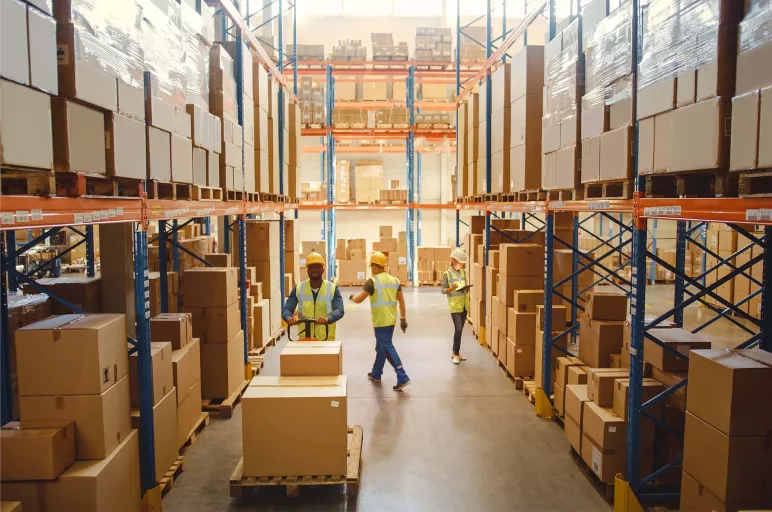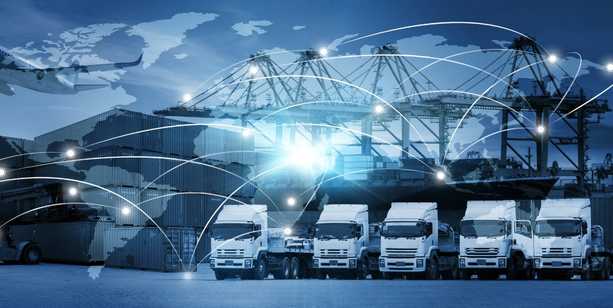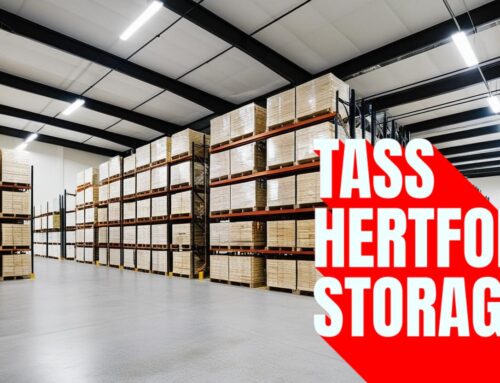The world of third-party logistics (3PL) is evolving faster than ever, driven by rapid technological advancements and shifting consumer demands. As we progress through 2025, businesses are increasingly relying on innovative 3PL providers to streamline operations, reduce costs, and meet the growing need for speed, flexibility, and sustainability.
Want a 3PL partner that keeps you ahead of the curve? At TASS Enterprise, we help businesses stay agile with scalable fulfilment, smart storage, and reliable shipping solutions tailored for 2025 and beyond.
From automation and artificial intelligence to eco-friendly practices and real-time data tracking, the logistics industry is undergoing a major transformation. These trends are not just reshaping how goods are moved—they’re redefining what customers expect from logistics partners.
In this article, we’ll explore the key trends and innovations shaping 3PL services in 2025 and what businesses need to know to stay competitive in this fast-changing landscape.
What is 3PL?
Third-party logistics (3PL) refers to the outsourcing of logistics and supply chain operations to a specialised external provider. These services can include warehousing, inventory management, order fulfilment, transportation, and shipping coordination. By partnering with a 3PL company, businesses can streamline their logistics processes, reduce operational costs, and focus more on core activities like sales and product development.
At TASS, we handle all of the above under one roof — offering everything from pallet storage and pick-and-pack to ecommerce integrations and UK-wide dispatch.
3PL providers bring expertise, technology, and scalability to help businesses meet growing customer demands, especially in e-commerce and retail. Whether handling last-mile delivery or managing complex international shipping, 3PLs play a vital role in ensuring goods move efficiently from manufacturer to customer across today’s fast-paced global market.
The Evolving Role of 3PL in Modern Supply Chains
The role of third-party logistics (3PL) providers in modern supply chains has grown significantly, shifting from basic service providers to strategic partners. Today, 3PLs do far more than simply store and ship goods—they help businesses optimise logistics operations, enhance customer satisfaction, and scale efficiently.
As supply chains become more complex and global, 3PLs offer the expertise and technology required to manage everything from inventory and order fulfilment to real-time tracking and returns management. With rising consumer expectations for fast, reliable deliveries and seamless experiences, businesses are increasingly relying on 3PLs for agile, tech-driven solutions.
Additionally, 3PL providers now play a crucial role in data analysis, helping companies make more informed decisions through insights into demand trends, shipping routes, and cost optimisation. This evolution has transformed 3PLs into essential partners who not only move goods but also drive growth, efficiency, and competitiveness in today’s fast-paced, customer-focused logistics landscape.
Key Trends Shaping 3PL in 2025
As we move through 2025, the third-party logistics (3PL) industry is evolving rapidly in response to market pressures, emerging technologies, and changing customer expectations. Businesses across industries are seeking smarter, faster, and more sustainable logistics solutions, and 3PL providers are rising to the challenge with innovative strategies to meet these demands. Below are the key trends driving change in the 3PL landscape this year.
AI and Automation Driving Efficiency
Artificial intelligence and automation have become central to modern 3PL operations. From automated warehouses with robotic picking systems to AI-powered demand forecasting and route optimisation, these technologies are helping logistics providers reduce human error, lower costs, and deliver faster services. In 2025, more 3PLs are investing in AI tools to streamline operations, improve inventory accuracy, and enhance overall supply chain visibility.
Real-Time Visibility and Data-Driven Decisions
Customers today expect to track their shipments in real time, while businesses rely on up-to-date logistics data to manage operations effectively. 3PL providers are meeting these expectations by using IoT (Internet of Things) devices, cloud-based platforms, and integrated tracking systems that provide end-to-end visibility.
Looking for real-time fulfilment updates you can actually rely on? TASS Enterprise offers transparent reporting, smart integrations, and full inventory control from day one.
Real-time data enables better decision-making, proactive issue resolution, and improved customer communication—making it a critical offering in competitive logistics markets.
Focus on Sustainability and Green Logistics
Sustainability is no longer optional. Environmental regulations, consumer preferences, and corporate social responsibility goals are driving 3PLs to adopt greener practices. In 2025, many logistics providers are prioritising electric delivery vehicles, route optimisation to cut emissions, eco-friendly packaging, and carbon offset programmes. Businesses are increasingly looking for logistics partners who align with their sustainability values, making this a key differentiator in the industry.
E-Commerce Growth and Last-Mile Innovation
The rise of e-commerce continues to reshape the 3PL landscape. Fast, flexible, and reliable delivery is more critical than ever. To meet these demands, 3PLs are investing in last-mile solutions, such as micro-fulfilment centres located closer to end customers and dynamic routing systems that adapt to real-time traffic and delivery windows. In 2025, expect even more innovation in this area, including drone deliveries and autonomous last-mile vehicles.
Customisation and Flexible Service Models
Every business has unique logistics needs, and 3PL providers are responding with more tailored solutions. Whether it’s custom packaging, scalable warehouse space, or specialised shipping options, flexibility is key. 3PLs are moving away from one-size-fits-all models and embracing modular services that let clients choose what works best for their operations, particularly in fast-changing industries such as retail, healthcare, and technology.
Cybersecurity and Risk Management
As logistics networks become increasingly digital, protecting sensitive data and ensuring business continuity are top priorities. In 2025, more 3PLs are investing in advanced cybersecurity measures and developing stronger risk management strategies to safeguard systems against cyber threats, supply chain disruptions, and compliance challenges.
These trends showcase how 3PL providers are transforming to stay competitive in a fast-paced, tech-driven world. By embracing innovation and staying aligned with client needs, 3PLs in 2025 are not just service providers—they’re strategic enablers of growth and resilience.
Innovations Transforming 3PL Services
In 2025, third-party logistics (3PL) services are being transformed by a wave of technological innovations designed to enhance speed, accuracy, and customer satisfaction. As supply chains become more complex and customer expectations continue to rise, 3PL providers are adopting advanced technologies to improve operations and deliver greater value to their clients.
Here are the key innovations reshaping the 3PL landscape.
1. Robotics and Warehouse Automation
Modern 3PL warehouses are increasingly automated, utilising robots for tasks such as picking, packing, sorting, and palletising. These systems boost efficiency and minimise errors, especially during peak seasons when order volumes surge.
Autonomous mobile robots (AMRs) and automated storage and retrieval systems (AS/RS) are now common in many fulfilment centres. By automating repetitive tasks, 3PL providers can process orders faster, lower labour costs, and maintain high levels of accuracy.
2. Predictive Analytics and Artificial Intelligence (AI)
Data-driven decision-making is at the core of modern logistics. With the help of AI and predictive analytics, 3PLs can forecast demand more accurately, optimise shipping routes, and manage inventory more efficiently.
These technologies analyse historical data, real-time conditions, and external factors such as weather or market trends to improve operational planning. This proactive approach minimises delays, reduces waste, and helps businesses stay ahead of customer demand.
3. Internet of Things (IoT) for Smart Tracking
IoT devices, such as GPS trackers and RFID tags, provide 3PL providers with real-time visibility across their entire supply chain. These smart sensors deliver updates on the location, condition, and status of shipments, enabling 24/7 monitoring.
This level of transparency helps businesses improve customer service, respond quickly to disruptions, and make informed decisions. In 2025, IoT integration is no longer a bonus—it’s essential for competitive logistics providers.
Need reliable stock tracking without the guesswork? We’ve got you covered — our systems at TASS provide full visibility, from warehouse to doorstep.
4. Blockchain for Secure and Transparent Transactions
Blockchain technology is increasingly being used in 3PL operations to enhance traceability and trust. By recording transactions in a secure, decentralised ledger, blockchain enables transparent record-keeping for all parties involved in a shipment. This helps prevent fraud, ensures product authenticity, and simplifies audits. For industries like pharmaceuticals, food, and luxury goods, blockchain provides an additional layer of accountability throughout the supply chain.
5. Autonomous Vehicles and Drones
3PL providers are testing and deploying autonomous delivery vehicles and drones to address last-mile challenges. These innovations reduce reliance on human drivers and speed up delivery times in urban and remote areas. Although regulations and infrastructure are still evolving, the use of autonomous technologies is gaining momentum, particularly for time-sensitive and lightweight deliveries.
6. Cloud-Based Platforms and API Integrations
Cloud-based logistics platforms enable seamless data sharing between 3PL providers and their clients. Through API integrations, businesses can link their e-commerce stores, inventory systems, and order management tools directly to the 3PL’s backend. This streamlines operations, reduces manual errors, and provides real-time updates for both parties.
Together, these innovations are enabling 3PL companies to offer smarter, faster, and more adaptable services. By embracing technology, 3PLs are becoming more than just logistics providers—they’re strategic partners, helping businesses grow and compete in a digitally connected world.
How 3PL Providers Are Adapting
In 2025, third-party logistics (3PL) providers are adapting rapidly to meet rising customer expectations, the growth of e-commerce, and increasing supply chain complexities. One significant shift is the greater investment in technology—3PLs are adopting automation, robotics, and artificial intelligence to streamline operations and improve efficiency. Real-time data analytics and IoT devices enhance visibility and enable smarter decision-making across the entire logistics network.
Flexibility is also a key focus. Many providers now offer customisable, scalable services to meet the specific needs of various industries, from small startups to large enterprises. This includes flexible warehousing, on-demand fulfilment, and specialised shipping options.
At TASS Enterprise, we help you adapt to shifting demands with ease — whether it’s scaling for a seasonal campaign or expanding into new markets.
Additionally, 3PLs are forming strategic partnerships with tech companies to expand their capabilities and remain competitive. They are also prioritising sustainability by optimising delivery routes, utilising electric vehicles, and adopting eco-friendly packaging.
To stay trusted partners, 3PLs are evolving from basic service providers into proactive, tech-savvy problem-solvers—offering solutions that align with modern business goals and the fast pace of today’s supply chains.
What Businesses Should Look for in a 3PL Partner in 2025
Choosing the right third-party logistics (3PL) partner in 2025 is more important than ever. With supply chains becoming increasingly complex and customer expectations rising, businesses need logistics partners that are not only reliable but also forward-thinking and tech-driven. Here are key factors to consider when evaluating a 3PL provider this year.
1. Technology and Innovation
A modern 3PL must have advanced technology integrated across its operations. Look for partners that offer real-time tracking, automated systems, predictive analytics, and seamless API integrations. These capabilities ensure better visibility, faster fulfilment, and data-driven decision-making—critical for staying competitive.
2. Scalability and Flexibility
Your logistics needs may shift due to seasonal demand, product launches, or business growth. A good 3PL should offer scalable services and flexible solutions that adapt to your changing needs without delays or disruptions.
3. Proven Track Record and Industry Expertise
Experience matters. Choose a 3PL with a strong reputation, industry-specific knowledge, and proven success managing logistics for businesses similar to yours. Case studies, testimonials, and performance metrics can provide valuable insights.
4. Sustainability Commitment
Environmental responsibility is a growing priority. Look for 3PLs that use eco-friendly packaging, optimise delivery routes for lower emissions, and implement green warehouse practices. A sustainability-minded partner supports your brand values and customer expectations.
5. Clear Communication and Transparency
Reliable communication is essential for successful collaboration. Your 3PL should provide transparent pricing, clear service-level agreements (SLAs), and responsive customer support to quickly resolve issues when they arise.
In 2025, the best 3PL partners are those that go beyond traditional logistics. They act as strategic allies—leveraging technology, expertise, and innovation to support your growth, improve customer satisfaction, and help you navigate an increasingly fast-paced supply chain environment.
How We Support Our Valued Clients:
At Tass Hertford, we are proud to work with an exceptional variety of businesses, ranging from local startups to internationally recognised e-commerce brands. We currently provide pallet storage, pick and pack, and despatch services for clients such as GoMate Drinks, UNLTD. Beer, Sakuranna Swimwear, and Nooi Nootropic Drinks.
Our clients rely on us not just for logistics, but also for the confidence that their operations are in capable hands. We take the time to thoroughly understand each brand’s unique requirements, delivering tailored solutions that meet their specific needs.
From creating bespoke influencer gift packs to storing temperature-sensitive products and fulfilling last-minute orders, our dedicated team consistently goes above and beyond to ensure we exceed expectations.
Everything We Do Not Just Storage Solution
We’ve been proudly supporting businesses in Hertfordshire and across the UK for over 20 years, and during that time, we’ve grown far beyond Storage Solution. Our full suite of services means you can rely on one trusted partner to handle your logistics from end to end. We offer:
- Pallet storage – secure, affordable, with short- or long-term options
- Pick, pack and despatch – fast, accurate, and scalable as you grow
- E-commerce fulfilment – including seamless integration with Shopify, Squarespace, Amazon FBA, TikTok Shop, and more
- Contract packing – including bespoke Christmas packing, gift hampers, and subscription boxes
- Influencer gifting – branded boxes, hand-wrapped gifts, handwritten notes, and more
- Container unloading, palletising, and depalletising
- Food and drink logistics – tailored to snack brands, supplement brands, and breweries
- Worldwide shipping – fast and cost-effective, from local to global
- Business storage – for stock, documents, or equipment, with no long contracts
- Office space and hot desking – beautiful workspaces with garden views, kitchen access, and parking
Whatever you need, our small team is always just a phone call away – 01992 511051.
The Future of 3PL: What’s Next Beyond 2025?
Looking beyond 2025, the future of third-party logistics (3PL) promises even greater innovation and transformation. Emerging technologies such as AI-driven supply chain orchestration, autonomous vehicles, and drone deliveries will become more commonplace, further enhancing speed and efficiency. Expect deeper integration between 3PL systems and client platforms, enabling real-time decision-making and seamless collaboration across global networks.
Sustainability will also remain a key focus, with 3PL providers investing in carbon-neutral operations and circular logistics models. Additionally, as customer expectations evolve, hyper-personalised logistics services—tailored to specific industries, delivery preferences, and even individual customers—will gain momentum.
The 3PL providers of the future won’t just move goods—they’ll act as strategic partners, leveraging data, technology, and innovation to solve complex logistics challenges. Businesses that align with forward-thinking 3PLs will be better positioned to scale, adapt, and compete in an increasingly connected and fast-paced global marketplace.
FAQs
Why are third party logistics providers becoming more essential in 2025?
In 2025, third party logistics providers are playing a bigger role as businesses outsource more logistics functions to handle rising customer demands and supply chain complexity. They help companies adapt quickly in an increasingly competitive market.
How do logistics companies improve operational efficiency?
Logistics companies use automation, AI, and real-time tracking tools to improve operational efficiency. These innovations reduce errors, speed up deliveries, and streamline warehousing—key advantages in a fast-paced and increasingly competitive market.
What trends are shaping third party logistics providers in 2025?
Key trends include greater use of predictive analytics, green delivery options, and integrated tech platforms. Third party logistics providers are also focusing on data-driven logistics functions to better serve their clients and improve operational efficiency.
How are logistics functions evolving with new technologies?
Modern logistics functions now rely heavily on digital tools, including robotics and cloud-based platforms. These advancements enable logistics companies to offer faster, smarter services in an increasingly competitive market driven by e-commerce and global trade.
Conclusion
In summary, 3PLs offer a wide range of benefits for businesses looking to outsource their logistics operations. From cost-effectiveness and expertise to specialised services and support for complex supply chains, 3PLs play a vital role in improving efficiency and reducing costs. Whether you are a small business seeking to streamline operations or a larger enterprise looking for support with your global supply chain, partnering with a reliable 3PL can bring significant advantages.
As the demand for efficient and streamlined logistics continues to grow, it is clear that 3PLs will play an increasingly important role in the future of supply chain management. Consider outsourcing your logistics needs to a reputable 3PL provider today and experience the benefits for yourself.
Thinking of outsourcing your logistics? Let’s make fulfilment the easiest part of your operation — call Brenda today on 01992 511051 or visit www.tasshertford.co.uk.










